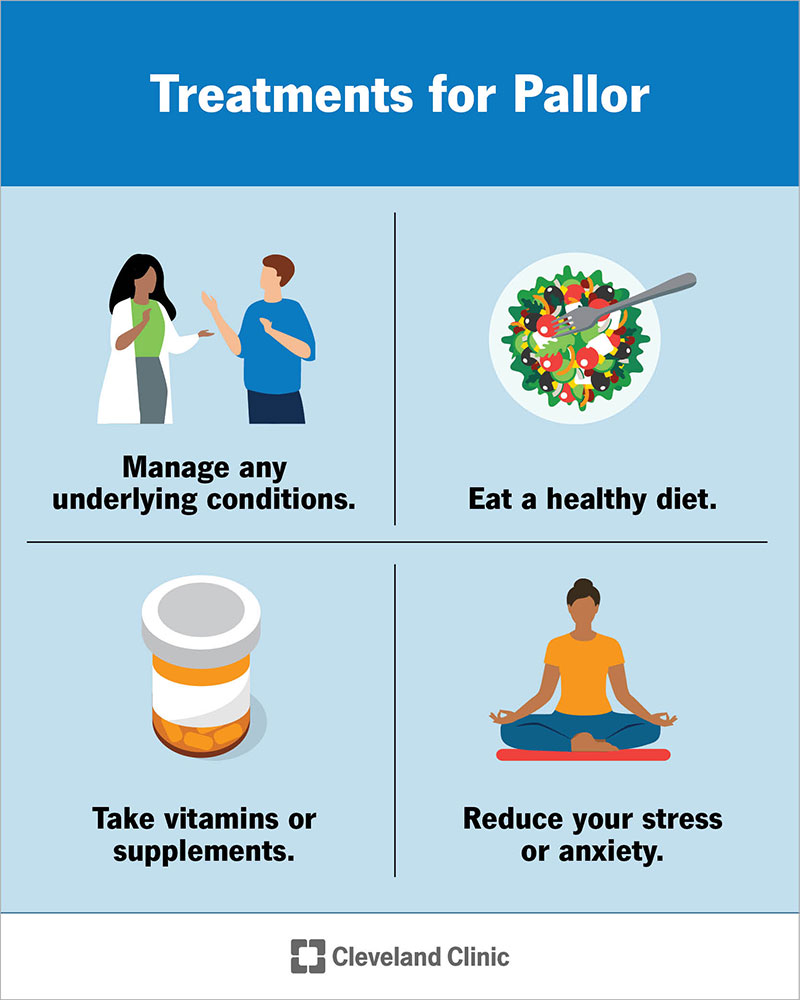Pallor (Paleness): Causes, Diagnosis & Treatment - Cleveland Clinic

What are the symptoms of pallor?
Symptoms of pallor include:
- Pale skin that's lighter or grayer than your natural skin tone.
- Pale mucous membranes on openings of your body, like inside of your mouth or on your eyelids.
If pallor occurs because of an underlying condition, you may experience the following symptoms in addition to skin paleness:
- Chest pain.
- A rapid heart rate.
- Fainting or a temporary loss of consciousness.
- Shortness of breath or difficulty breathing.
- Sweaty or clammy skin.
- Dizziness or lightheadedness.
- Fatigue.
Advertisement
Where will I see symptoms of pallor?
Pallor can affect the skin on your whole body or your mucous membranes, but it's most notable on your:
- Face.
- Fingernails.
- Lining of your eyes.
- Inside of your mouth.
What is localized pallor?
Localized pallor is a term that refers to paleness on only one limb. For example, if you have localized pallor, you might only have paleness on your right arm after an injury. Localized pallor may be a sign of an underlying condition, so it's important to visit a healthcare provider if you have this symptom.
Advertisement
What causes pallor?
A decrease in blood supply and oxygen in your skin causes pallor. There are many reasons why pallor occurs, ranging from:
- An emotional response like fear or shock.
- A side effect of a medication.
- An underlying health condition.
What conditions cause pallor?
Pallor can be a symptom of a condition including but not limited to the following:
What are the risk factors for pallor?
Pallor can affect anyone, from children to adults. It's a common condition to find in movies and television shows during dramatic and suspenseful moments. For example, a character feels fear or shock, turns pale and faints. While these scenarios in the media aren't the most accurately depicted, they bring awareness to the symptoms of pallor to look out for in yourself, your family and friends.
Comments
Post a Comment